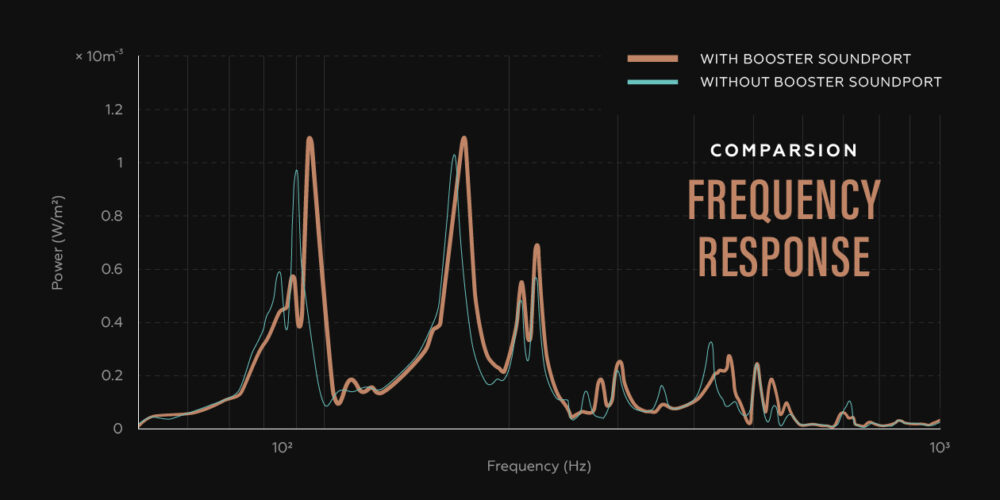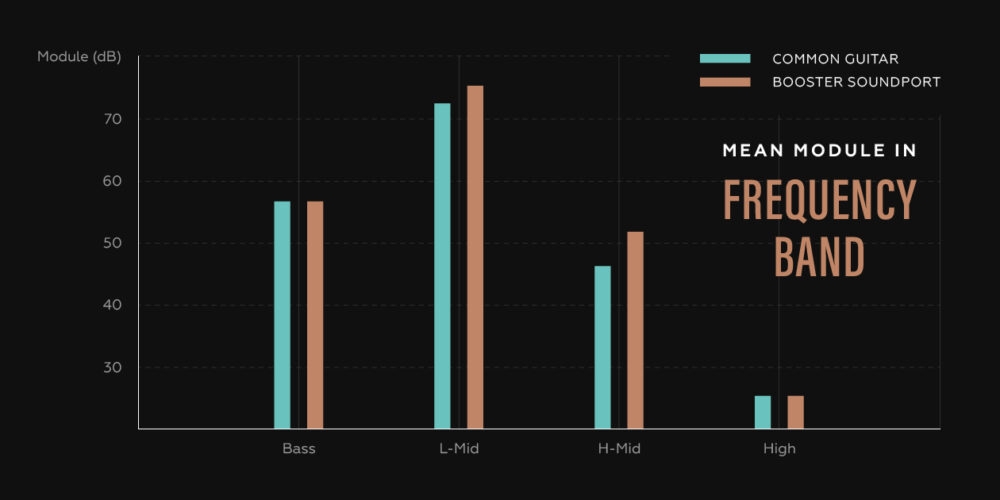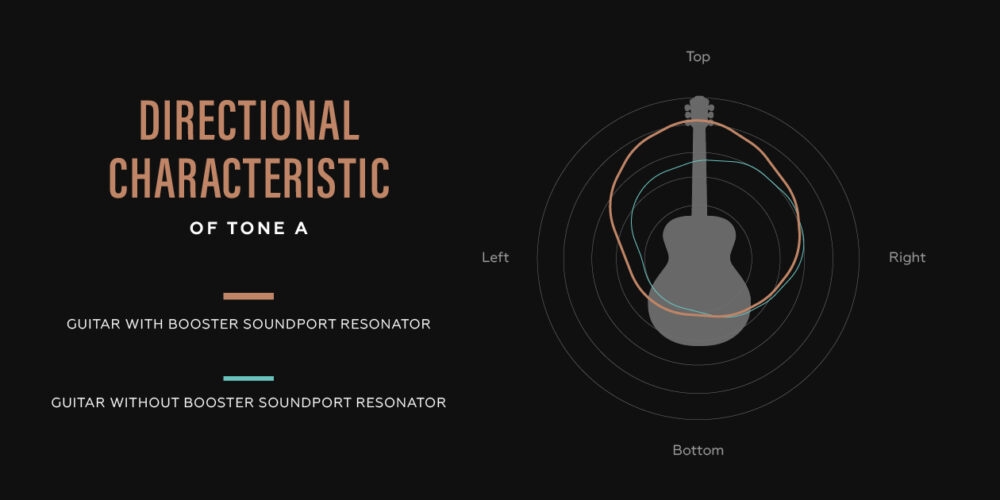Clearer, Louder, and More Resonant Sound With the New Booster Soundport
We’re excited to introduce the all-new Booster Soundport feature, an innovative resonator that takes the acoustic performance of Furch guitars to a whole new level. Positioned on the side of the guitar’s body, Booster Soundport enhances the clarity, volume, and resonance of your sound, giving you an even richer and more immersive playing experience.

Pioneering Design for Improved Projection and Resonance
The Booster Soundport feature transforms the playing experience by optimizing both sound projection and body resonance. By reducing internal air pressure within the guitar’s body, it allows for the top soundboard to move more freely, producing a fuller and more dynamic sound with the same strumming effort. The soundport is strategically placed on the side of the guitar, allowing the player to hear their music as clearly and richly as the audience, enhancing the interaction between you, the musician, and your instrument.
“The Booster Soundport offers a new dimension to the playing experience. It’s not just about louder sound—it’s about achieving a more responsive, resonant instrument that truly comes to life in your hands,” says Petr Furch. “Whether you’re writing music, performing, or playing for yourself, the Booster Soundport ensures that the sound reaches your ears as clearly and richly as it does for your audience.”
Journey of Discovery and Development
The development of the Booster Soundport arose from our ongoing exploration of acoustic guitar potential. Petr Furch explains: “It all began when I was testing some of our smaller-bodied guitars like the Little Jane or the OM shape, and noticed their exceptional output given their size. However, when I examined our dreadnoughts, despite their volume and rich low-end, I realized there was more untapped potential to unlock—not just in our guitars, but in all dreadnoughts in general.”
In our pursuit of enhancing acoustic performance, we experimented with bracing patterns, top board preload, and fine-tuning their voicing process. However, something was still missing. “The turning point came when we focused on soundhole parameters,” says Pavel Hoffmann from our R&D team. “There’s a known relationship between an instrument’s body volume and the soundhole’s circumference, much like in violin making. Our smaller guitars have this ideal ratio, which inspired us to experiment with larger models too.”
Petr Furch further elaborates: “As we gradually increased the size of the soundhole, we noticed acoustic improvements, but as fans of traditional acoustic guitar design, we were reluctant to compromise the guitar’s structure and aesthetics with an oversized opening. To address this, we developed a soundport design featuring six parallel linear openings on the side of the guitar’s body. The additional soundhole circumference is distributed across these six openings, preserving both the guitar’s acoustic benefits and its structural integrity. Additionally, the soundport is reinforced with a fiberglass underlayer, providing superior structural stability and ensuring long-lasting durability.”
Acoustic Benefits and Enhanced Player Experience
The effectiveness of the Booster Soundport was validated through rigorous testing in our anechoic chamber. Measurements taken before and after the installation of the soundport demonstrated a clear improvement in the guitar’s performance. When comparing the frequency response of the guitar’s soundboard with and without the Booster Soundport, the soundport was found to increase performance across the entire audible frequency spectrum (20-20,000 Hz) by an average of 1.4 dB, equivalent to approximately an 8% improvement. “Specifically, the first mode showed a 6% increase, the second mode a 4% increase, the third mode a 14% increase, and the fourth mode a 24% increase,” elaborates Pavel Hoffman.

The impact of the Booster Soundport was further demonstrated through a detailed analysis of frequency band performance. Measurements across the bass, low-mid, high-mid, and high frequencies revealed significant improvements. Pavel Hoffman elaborates: “While the average performance in both the bass and high frequencies remained largely unchanged, the midrange frequencies saw a notable boost. Specifically, the low-mid range showed a 12% improvement, while the high-mid range exhibited a remarkable 24% increase.” These enhancements were calculated by analyzing the performance ratio and converting the results into percentage gains.

When we examined the guitar’s directional sound projection with and without the Booster Soundport, a significant increase in acoustic performance was observed toward the guitar’s headstock and to the left side, corresponding to the player’s head position. Specifically, there was a 16% increase upward, an 8% increase to the left, and a 1% increase downward.

“We’ve found that the Booster Soundport creates a more intimate connection between the player and their music by ensuring they hear every nuance clearer as they perform,” notes Pavel Hoffmann. Petr Furch adds: “It brings that improved sound closer to your ears in a more accurate form. It’s ideal for anyone who wants to get the most out of their guitar, whether performing for an audience or playing for personal enjoyment.”
Our debut series to incorporate the Booster Soundport is the new Blue Performance range, an addition to the popular Blue series. This range consists of two models: the Blue Performance Dc-EW, featuring an Engelmann spruce top over black walnut back and sides, and the Blue Performance Dc-EM, which has African mahogany back and sides. Both models come standard with an LR Baggs EAS-VTC pickup with soundhole controls, and each includes a premium Furch gigbag. The range of models featuring the Booster Soundport will expand in the near future.


